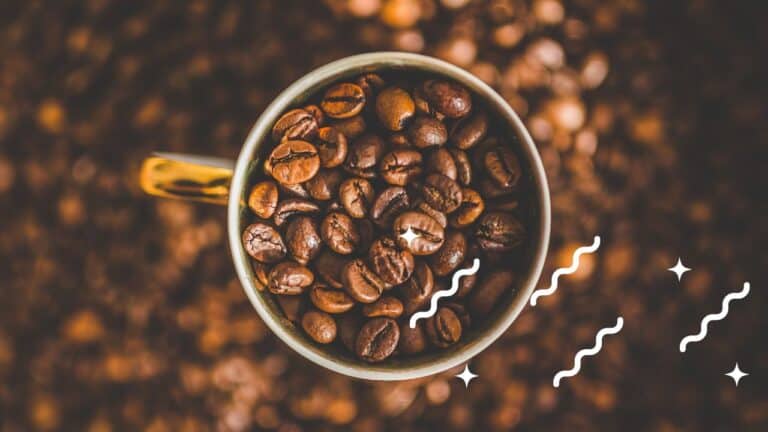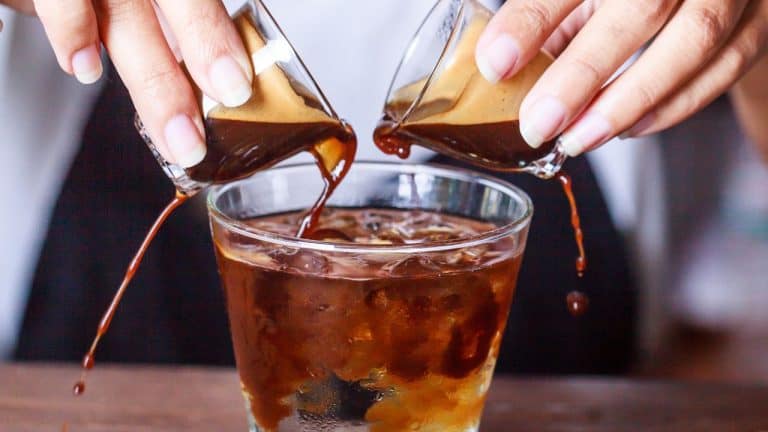5 Simple Steps To How Coffee Is Made From Bean to Cup
Have you ever thought how coffee is made, the exact outline from a bean to a cup? The time it takes to roast coffee or how it goes into the packaging? Today, I’m going to be covering just that!
Individuals are different; therefore, some may consume the coffee in the form of iced, ready to drink, cold brew, or the trending nitro coffee.
Due to the demand for coffee, its sale increases every day. Coffee is the second valued commodity after oil. Nutrition-wise, coffee comprises manganese, potassium, riboflavin, niacin, and magnesium.
Caffeine intake lowers the risk of dementia, Alzheimer's disease, Parkinson's disease, diabetes, and calms down asthmatic patients.
Thereby if you are all curious about the process of making coffee, here then you do not need to worry because, in this article, I will discuss the five steps of making coffee from bean to cup.
Related Article: How to Save Money on Coffee

#1 - How Coffee is Made – It Starts with the Bean
After planting a coffee shrub, the tree begins flowering after 3-4 years. The flowers develop into coffee fruits, which then ripen after eight months and change color from green to red.
In ever cherry of a coffee, there are two seeds. Two harvesting processes are handpicking or strip picking.
Coffee Bean Harvesting and Processing – Strip Picking Coffee
Strip picking is where the coffee fruits are removed from the tree, whether they are ripe or not. However, finer Arabica coffee gets exclusively harvested through hand picking.
What is Coffee Handpicking?
The handpicking method is labor-intensive. Usually, like any other tree, the coffee fruit does not ripen at the same time; thus, they get picked 3-6 times to harvest all the cherries.
One coffee tree yields four thousand beans! As the coffee cherries get picked, the green cherries end up mixing with the ripe coffee fruits.
Coffee gets separated mainly through two methods that are the wet and dry methods. Wet methods involve putting all the coffee in water, and the overripe coffee and green coffee, sticks, and leaves float in the water, and they get separated.
The remaining coffee gets passed via a de-pulping machine, and it peels the fruit, and then they are fermented.
After fermentation, the coffee beans are washed and then dried under the sun for five-six days on the patio where they get regularly turned. After the coffee beans dry, they are sorted, graded cleaned in a multi-step.
Sieve shakers, gravity separators, and air sorters machines get used to sorting coffee beans according to size and density. Color sorting is conducted through hand or by using machines.
Grading gets done according to taste, growing location, taste, and the number of imperfections like sticks, stones, broken beans, black beans, and the size of the coffee beans.
These imperfections rank the quality of the coffee; therefore, Arabica coffee in our coffee has fewer faults.
#2 - Roasting the Coffee Beans
To roast coffee beans to perfection, need a lot of necessary skill and experience. Therefore, to bring the best flavor, it is essential to note that a different variety of coffee gets roasted differently.
Coffee beans get typically roasted in huge coffee roasting machines, this involves putting the coffee beans in the metal cylinders, and hot air is drove to them.
During stage one of roasting, the coffee beans temperatures range from 200 F - 250 F; during this stage, the coffee beans change color to pale yellow as they lose moisture.
The temperatures rise to over 300 F, where the coffee beans start to double their initial size and swell. At 400 F, the internal temperatures of the bean rise, releasing volatile oils that are responsible for the aroma and distinct flavor of the coffee.
The moisture gets sucked where the coffee beans cells expand and burst, with a snapping or a crackling sound.
Due to the high heat, the sugars caramelize, hence darkening the beans. As the process continues, the cell wall keeps breaking, thus surfacing the oils. Roasting facilitates the elimination of the remainder chaffs or silver skin.
Roasting takes ninety seconds to thirty-five minutes basing on the temperature degrees and the roasting equipment used. Winding-up temperatures arrays from 410-480 F.
Related Article: How to Grind Coffee Beans Without a Grinder
#3 - How Coffee is Made – Grind the Coffee Bean
After roasting the coffee beans, they come as whole beans; hence to get fine coffee, one must grind the coffee.
The particles of the coffee depend on the grinding machine one will use. The grind size goes hand in hand with the brewing method.
Therefore, grinding increases the coffee beans' surface and enables the beans to produce flavor when brewed. Grinding coffee can be done at home, in the coffee house, in a retail store, or at a roasting plant.

#4 - Packaging The Coffee Bean
Once roasting the coffee beans is complete, it's advisable to put them for 6-10 hours without packaging them; this allows them to degas, this is because they produce carbon dioxide.
However, in case the coffee is packaged before the degassing, the gasses will get produced in the container, which may lead to bursting if they get packed in airtight containers.
Therefore, coffee is packaged in one-way valve bags, and these bags have specialized vents that facilitate the carbon dioxide to outflow but do not allow air back in.
The sole purpose of packaging is to protect the coffee from moisture and air.
#5 - Brewing Coffee
Boom, we already got here at the very final stage. Here you buy your coffee from the nearest grocery store or Verena street coffee online.
Then grind your coffee in your ideal style and brew it; however, you like your coffee best.
Conclusion
So, there you have the 5 steps on how coffee is made! Coffee is a best friend to a lot of individuals out there.
It's kind of brings internal calmness when you are taking coffee peacefully, may it while you are traveling, while working probably while moody or even in the morning after waking.
The above article drives you way back from the first process where farmers get involved to pickers to when the machine is used to packaging, grinding, distributors, and every other character that contributes to the successful journey of coffee making.
If you’d like to leave any tips about the process, leave a comment below.







